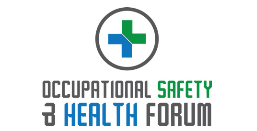Incident reporting solutions for occupational health and safety (OHS) professionals in the UK have advanced significantly in the last year, with a focus on improving efficiency, data accuracy, and real-time response capabilities. These trends are driven by technology, rising compliance standards, and the need for proactive risk management. Here’s a look at the biggest trends, usage scenarios, technology, costs, and the future outlook for incident reporting…
1. Mobile and Cloud-Based Reporting
Mobile and cloud-based incident reporting platforms are now standard in OHS, providing a flexible, accessible way for employees to report incidents in real-time. Using mobile apps, employees can instantly report hazards or accidents from any location, attaching photos, videos, and notes to provide detailed context. Cloud-based solutions allow all incident data to be stored in a central, accessible location, enabling OHS professionals to monitor and manage incidents remotely. This real-time accessibility is particularly valuable for industries with multiple or remote sites, such as construction, manufacturing, and logistics.
These platforms are cost-effective compared to traditional paper-based systems, reducing administrative work and enabling faster incident response and trend analysis. With subscription-based pricing, cloud and mobile solutions are also scalable, allowing businesses to adjust costs based on team size and usage needs.
2. Automated Data Analysis and Predictive Analytics
Automated data analysis and predictive analytics have become essential in incident reporting solutions, helping organizations identify patterns and predict potential risks before they escalate. Using AI-driven analytics, OHS professionals can analyze historical data to understand common causes of incidents and high-risk areas, enabling them to implement targeted preventive measures.
Predictive analytics not only reduces the frequency of incidents but also lowers long-term costs by proactively addressing hazards. These analytics are particularly useful in high-risk industries, like manufacturing and construction, where understanding risk patterns can prevent injuries and enhance safety protocols.
3. IoT Integration for Real-Time Monitoring
The integration of Internet of Things (IoT) technology is revolutionizing incident reporting by providing real-time data from sensors and wearables. In industries such as mining, oil and gas, and heavy manufacturing, IoT sensors can monitor environmental conditions (e.g., temperature, gas levels) and alert safety teams of potential hazards. Wearables equipped with sensors track employee movements and monitor health indicators, allowing for instant reporting if someone experiences a fall or other health-related issue.
IoT integration requires an initial investment but can significantly reduce incident-related costs by improving response times and preventing accidents. As the cost of IoT devices decreases, more organizations are expected to adopt this technology for enhanced workplace safety.
4. User-Friendly Interfaces and Employee Engagement
User-friendly design is a growing priority for incident reporting solutions. Simplified interfaces make it easier for employees to report incidents accurately, improving reporting rates and data quality. Solutions with built-in training modules, automated prompts, and intuitive navigation increase employee engagement with the reporting system, making incident reporting a part of everyday operations.
Higher engagement leads to a more accurate reflection of workplace risks, allowing OHS teams to address issues more effectively. User-friendly solutions are typically affordable, and their ability to drive better engagement can lead to significant cost savings over time by reducing incident frequency.
Outlook for 2025 and Beyond
The future of incident reporting solutions lies in even greater integration of AI, IoT, and predictive analytics, as well as expanded capabilities for real-time monitoring and risk prevention. Moving forward, OHS professionals can expect solutions that provide deeper insights, faster responses, and seamless compliance with evolving safety standards. Incident reporting will continue to be an integral part of proactive health and safety management, with technology making workplaces safer, more compliant, and more efficient.
Are you searching for Incident Reporting solutions for your organisation? The Occupational Safety & Health Forum can help!





